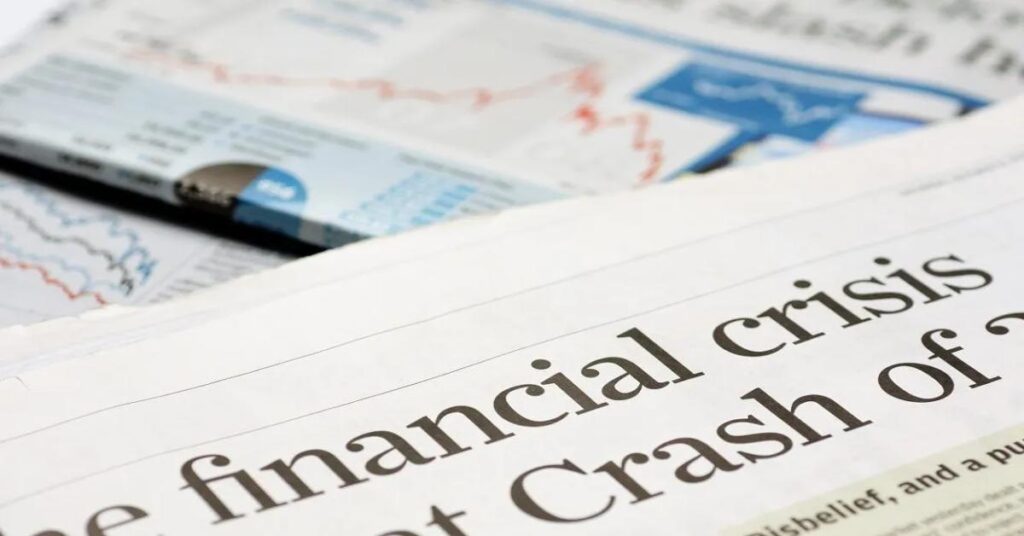A financial crisis can manifest in many ways. There is no one particular reason why a financial crisis takes place. There is always a myriad of reasons behind it.
Usually, situations like a steep fall in the value of an asset; companies, investors, and consumers not being able to fulfill their obligations, and a rise in debt is considered a financial crisis.


Let us try to understand how this happens.
Investors invest in the stock of companies. Some investors are informed. Some invest irrationally following a herd-like behavior. Usually, the prices of such stocks are heavily inflated. This creates a bubble or illusion that the company is doing well. A large number of investors put their money in the shares of such companies. This bulk increase in demand spikes the share price even more. Investors plan to sell off their shares at a higher price in the future.
But what happens when these companies do not fare well? The stock price falls sharply. Investors sell their shares to minimize their losses as they anticipate a further fall in share price. Just as a herd of investors had invested earlier, now, a herd of investors pulls back their money from the market. This leads to a stock market crash- a form of a financial crisis. When there aren’t enough investors in the market, businesses close down and unemployment prevails.
The Greatest Financial Crisis
A similar incident took place before the Great Recession in 2008. A large number of people in the U.S. invested in tech companies. Things did not turn out to be as rosy as the irrational expectations of herd investors. The stock market crashed. People pulled back their money and were in search of profitable investing options. They did not want to keep their money with banks as the interest rate was low.
At this time, housing looked like a profitable asset. Banks were also providing sub-prime loans at adjustable rates to people. Sub-prime loans simply mean there are not enough resources for that person that he should be granted a loan. Still, banks provided such loans, thus not adhering to loan-lending norms. A few years down the line, the adjustable rates increased. Most people had no idea what adjustable rates are and neither did the bank provide proper information about this (financial institution negligence).
Meanwhile, the investment banks purchased these sub-prime loans and converted them into a complex financial instrument called collateralized debt obligation (CDO) wherein they promise to pay the investors regularly from the pool of cash generated from bonds or other assets held by such investment banks. What happened here is that the banks shifted their risk to the investment banks (IB) and the IBs shifted it to CDO holders. There was a huge demand for CDOs because the IBs had made it grant AAA ratings from top credit rating agencies (regulatory negligence). People thought of CDOs as lucrative and promising financial instruments.
But everything collapsed when the sub-prime loan holders started defaulting instead of high loan interest. The disposable personal income was way too low to pay back the loan. Banks started selling those houses to retrieve their loan amount. Too many sell-off of houses (increased supply) led to a sharp decline in the value of the real estate. Now, the people did not want to pay a loan amount that was higher than what the house was worth. Consequently, more people defaulted. People lost trust in the banks and there were bank runs.
CDOs failed as there was little to no money generated from borrowers or real-estate sell-offs. It was not enough. The Federal Reserve was supposed to regulate CDOs but it refused to do so (regulatory negligence). Some CDO holders knew that this financial instrument would soon fail. They had insured this financial instrument with AIG (the biggest insurance company at that time in the U.S.) CDO failed and the insurance companies were turning insolvent.
The U.S. government had to intervene and bail out these insurance companies. Lakhs of people became unemployed followed by the failure of banks, insurance companies, investment banks, and businesses. There were no investors and hence no production. The biggest economy went into a recession in 2008 impacting the entire world.
A financial crisis is also caused by uncontrolled human behavior (e.g., Russia-Ukraine War 2022), unforeseen tragedies (e.g., the Covid pandemic), and sovereign default (Sri Lankan economy crisis- the govt is set to fail in paying off international debt due to the lack of dollars (foreign currency) fueled by surging inflation, caused by printing of domestic currency (increase in money supply, hereby devaluing the domestic currency).
No one knows when a financial crisis will occur. It is usually preceded by a bubble. Some financial experts and experienced stock market participants believe we are in yet another bubble when everything is good. There is enough anticipation on the internet about another great financial crisis.
